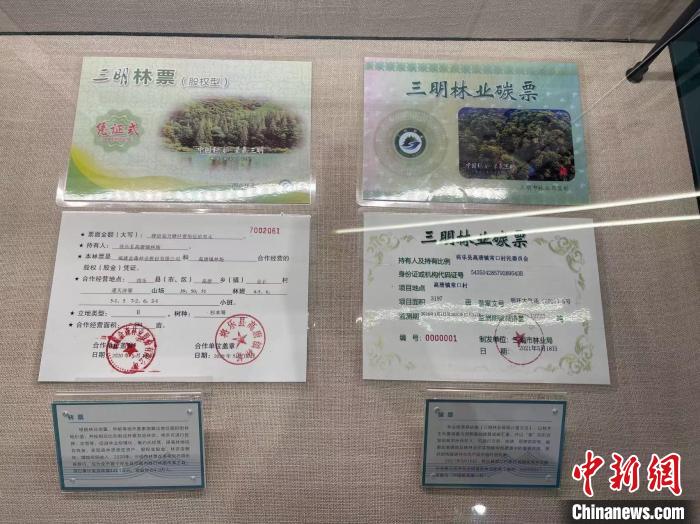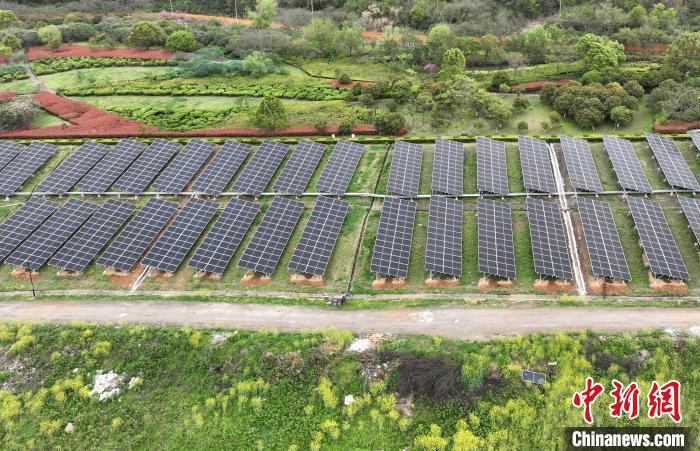Looking at China's "double carbon" answer sheet from the start and stability of the world's largest carbon market
China News agencyBeijing, July 10: Looking at China's "double carbon" answer sheet from the start and stability of the world's largest carbon market
China News agencyreporter Yu Lin
Since the national carbon emissions trading market was put into operation, the role of promoting corporate emission reduction and accelerating green and low-carbon transformation has gradually emerged. Especially in January this year, the national voluntary greenhouse gas emission reduction trading market was launched, and the carbon quota trading price rose more than expected and continued to be high. China's carbon market is using strong market power to push China one step closer to achieving the "double carbon" goal.
In October 2011, seven provinces and cities in Beijing, Tianjin, Shanghai, Chongqing, Guangdong, Hubei, and Shenzhen launched local pilot projects for carbon emissions trading. Since 2013, seven local pilot carbon markets have been launched for trading, laying the foundation for the construction of a national carbon market.
In 2020, China announced the goal of "striving to peak carbon dioxide emissions before 2030 and striving to achieve carbon neutrality before 2060." Since 2021, China has actively implemented the Paris Agreement, further improved its nationally determined contributions, and vigorously, orderly and effectively promoted various key tasks around the goal of carbon peak and carbon neutrality. China has established a "1+N" policy system for carbon peaking and carbon neutrality, formulated medium-and long-term greenhouse gas emission control strategies, promoted the construction of a national carbon emissions trading market, and formulated and implemented a national climate change adaptation strategy.

On May 18, 2021, the country's first batch of forestry carbon coupons were issued in Sanming City. (Data map)China News agencyPhoto by reporter Ruan Yulin
Xu Huaqing, chief scientist of the National Center for Strategic Research and International Cooperation on Climate Change, said that as the world's largest developing country, China has incorporated carbon peak and carbon neutrality into the overall layout of ecological civilization construction and the overall economic and social development, and scientifically researched and formulated timetables. Roadmaps and construction drawings will use the shortest time in global history to complete the world's highest reduction in carbon emission intensity and achieve the transition from carbon peak to carbon neutrality, which not only reflects ambition, It also requires arduous efforts.
The national carbon emissions trading market is an institutional innovation to promote green and low-carbon development and an important core policy tool for implementing China's "double carbon" goals.

The photovoltaic power plant on the Hangzhou Landfill in Zhejiang Province is expected to generate a total power generation of 33.03 million kilowatt-hours during the 20-year operation period, equivalent to an average annual reduction of 1141 tons of carbon dioxide emissions. (Data map)China News agencyPhoto by reporter Wang Gang
On July 16, 2021, the national carbon emissions trading market launched online trading. At present, the national carbon market has successfully completed two compliance cycles, covering approximately 5.1 billion tons of carbon dioxide emissions annually, making it the world's largest carbon market covering greenhouse gas emissions.
On January 22 this year, the national voluntary greenhouse gas emission reduction trading market was officially launched. On May 1, the landmark Interim Regulations on the Management of Carbon Emissions Trading was officially implemented, marking the first time that China has clarified the carbon emissions trading system in the form of administrative regulations.
Lu Xinming, deputy director of the Climate Change Response Department of the Ministry of Ecology and Environment, said that the country now has two complementary and interconnected markets, one is a mandatory carbon market and the other is a voluntary emission reduction market, marking the basic composition of China's carbon market system.
"The carbon market has achieved the expected construction goals, and a relatively complete institutional framework has been established." Lu Xinming said that at present, the national carbon emissions trading market has established an infrastructure support system of "one network, two institutions, and three platforms", including the national carbon market information network, national carbon emission rights registration agencies and trading institutions, and national carbon emission rights registration system, trading system, management platform, carbon emission rights accounting and management capabilities have been significantly improved.
Lu Xinming said that as the world's largest developing country, China's energy demand will continue to grow rigidly. Using market means to promote enterprises to achieve emission reductions in a more flexible way and at lower costs is an important way to achieve China's "double carbon" goal. The method is also a carbon reduction policy tool widely adopted by various countries.
Ma Aimin, former deputy director of the National Center for Strategic Research and International Cooperation on Climate Change, said that to achieve the "double carbon" goal, China needs to adopt effective measures in various aspects such as law, economy, technology, and market, and requires the joint efforts of the government and enterprises. China has completed the top-level design of the "double carbon" goal, relevant departments have formulated action plans in relevant important areas, and various provinces, autonomous regions and municipalities have also issued action plans, laying a solid foundation for the implementation of the "double carbon" goal.

Xiamen is vigorously building a green and low-carbon development model. The picture shows that after more than 30 years of comprehensive management, the water and banks of the Lake are clear and green, becoming the "green lung" in the core area of the city.China News agencyPhoto by reporter Ruan Yulin
China's carbon emissions are mainly concentrated in key industries such as power generation, steel, building materials, nonferrous metals, petrochemicals, chemicals, papermaking, and aviation. These eight industries account for about 75% of China's carbon dioxide emissions. The relevant person in charge of the Ministry of Ecology and Environment said that it is urgent to include more qualified industries into the national carbon emissions trading market to reduce the cost of emission reduction for the whole society.
In the first half of this year, the Ministry of Ecology and Environment successively issued draft comments on carbon emission accounting, reporting and verification guidelines for the aluminum smelting industry and cement clinker industry. This move was understood as a strong signal for the expansion of the carbon market.
"The carbon market expansion target should be completed before 2030." Ma Aimin said that building a more effective carbon market requires expanding the coverage of the market, appropriately tightening quota allocation, further enriching trading varieties and trading methods, increasing the number of trading entities, and giving full play to the role of market mechanisms in achieving the "double carbon" goal. (End)







